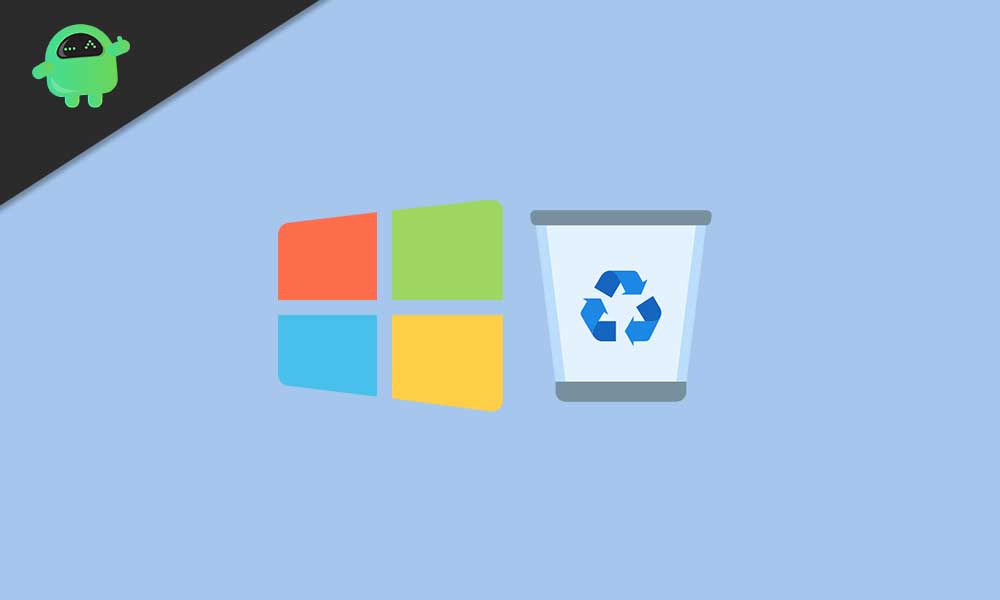It’s been a couple of years of the Windows 10 operating system in the market publicly and the performance, stability, visual elements, additional bunch of features, etc have been included so far very nicely. However, it seems that some of the changes in the features aren’t that useful to some of the Windows 10 users. Previously, a delete confirmation dialog box appeared but unfortunately, it’s no more since the release of Windows 8. But if in case, you want this feature back, you can check out how to Enable or Disable Delete Confirmation Dialog on Windows 10?
As the deleted items are moved to the Recycle Bin directly always (if not permanently deleted), there is no point in getting the delete confirmation dialog box anymore. However, if in case, you’re working a lot on your Windows 10 system and delete a lot of files quite frequently then this feature should come in handy for you to prevent accidental removal process or mistakes in most cases. That means now you don’t need to worry about deleting files unintentionally without getting any prompt.
Also Read
Page Contents
How to Enable or Disable Delete Confirmation Dialog on Windows 10?
Now, if in case, you’re prone to mistake a lot while deleting files/folders even a single one on your Windows 10 computer, the delete confirmation prompt will ensure you to confirm the task once again. So, you can easily review the particular file name, or file type, or counts before actually deleting to reduce mistakes.

It will also help you to find out all the recently deleted files/folders from the Recycle Bin, in case you’ve done a mistake. Here we’ve shared a couple of the methods to bring back the same old-school delete confirmation prompt on your Windows 10 easily.
Note: Keep in mind that permanently deleting a file(s) or folder(s) won’t fall into this method as deleting anything permanently won’t move to Recycle Bin. To recall, press the Shift key and press the Delete key will permanently delete a selected file or folder and won’t be recovered easily except for the help of a data recovery tool.
1. Use Recycle Bin
You’ll find out the enable or disable delete confirmation dialog on Windows 10 in the properties window of the Recycle Bin. To do this:
- Make sure that the Recycle Bin shortcut is present on the desktop screen.
- If not available, right-click on the desktop screen (blank area) > Click on “Personalize”.
- Now, click on Themes from the left pane > Click on “Desktop icon settings” from the ‘Related Settings’ (right side of the interface).
- Click on the ‘Recycle Bin’ checkbox to enable it > Hit ‘Apply’ and then ‘OK’ to save changes.
- Now, right-click on the “Recycle Bin” desktop shortcut > Select “Properties”.
- Click on the “Display delete confirmation dialog” checkbox > Then hit ‘Apply’ and ‘OK’ to save changes.
- You’re done. Now, whenever you delete something on your PC, a delete confirmation dialog box will appear to confirm the action. So, you can choose ‘Yes’ or ‘No’ accordingly.
However, if in case, you want to disable it back, then follow the same above steps and just uncheck the checkbox and hit Apply.
2. Use Registry Editor (Windows 10 Home Edition)
- Press Windows + R keys on your keyboard to open up the Run dialog box.
- Now, type regedit and hit Enter to open up the Registry Editor window.
- If prompted by the UAC, click on ‘Yes’ to proceed.
- Now, head over to the following key in the Current User:
HKEY_CURRENT_USER\Software\Microsoft\Windows\CurrentVersion\Policies\Explorer
- Once in the above location, just right-click on the right pane (blank area).
- Click on New > Select DWORD (32-bit) Value > Rename the value as ConfirmFileDelete.
- Next, you’ll need to double-click on the ConfirmFileDelete value > Change the value data to 1 and hit OK.
- Once done, close all windows and restart your computer.
- Finally, try deleting any file/folder to check whether the delete confirmation dialog box appears or not.
To disable it back, follow the same above steps and set the value data to 0 or you can directly delete the ConfirmFileDelete value from the Registry Editor.
3. Use Local Group Policy Editor (Other Windows Edition)
If in case, you’re using the Windows 10 Pro/Mobile/Enterprise, etc edition on your computer then you’ll need to follow the below steps:
- Press Windows + R keys on your keyboard to open up the Run dialog box.
- Now, type gpedit.msc and hit Enter to open up the Local Group Policy Editor window.
- If prompted by the UAC, click on ‘Yes’ to proceed.
- From the User Configuration category, you’ll need to navigate to the following settings:
User Configuration\Administrative Templates\Windows Components\File Explorer
- Next, you’ll need to double-click on the “Display confirmation dialog when deleting files” settings.
- A new window will open and select Not Configured to Enabled.
- Finally, click on Apply and then OK to save changes.
- You’re good to go.
However, if you want to go back and disable it, then follow the same above steps and select Not Configured or Disabled from the option.
That’s it, guys. We assume this guide was helpful to you. Feel free to ask in the comment below for further queries.
